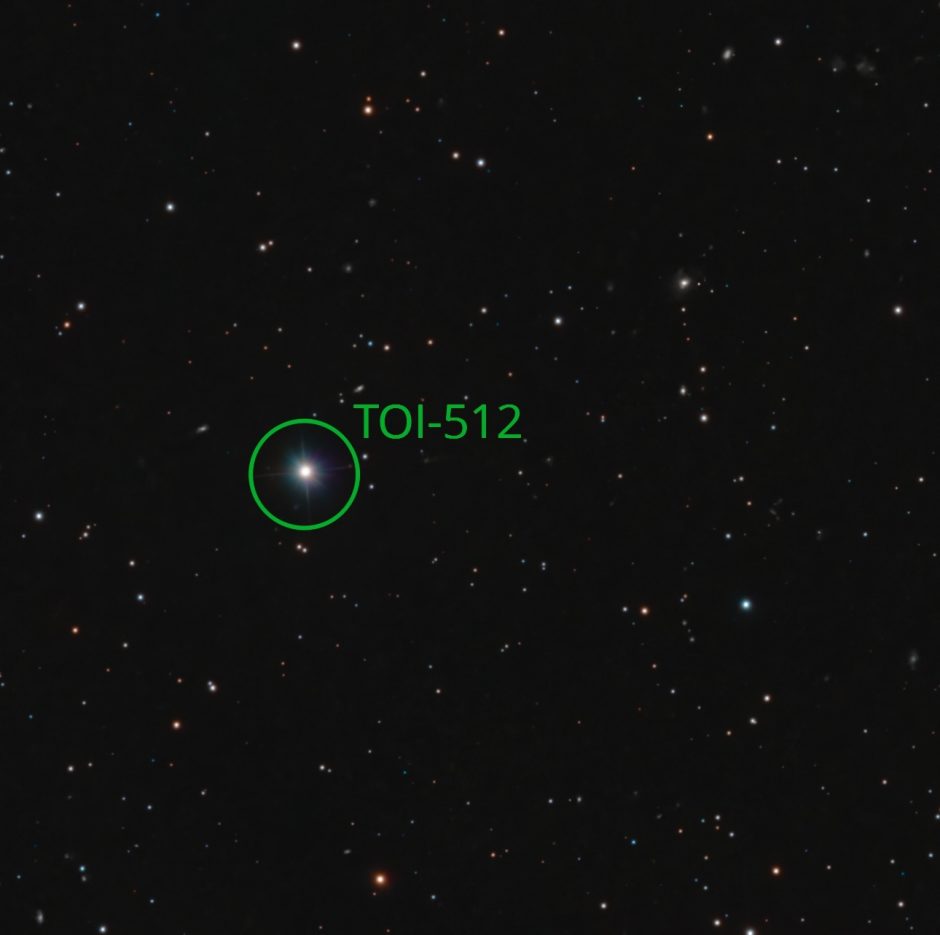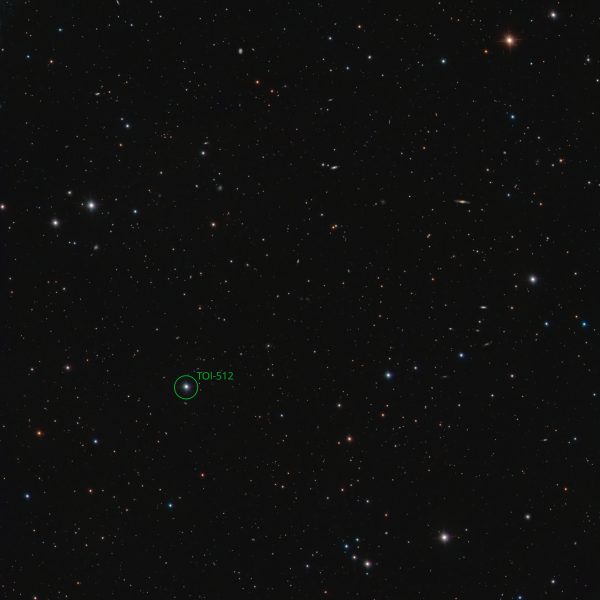Observational tango reveals a Super-Earth

An international team, including researchers from the University of Geneva (UNIGE) and the National Research Centre PlanetS, announces the discovery of a new super-Earth around a star slightly cooler than our Sun. Once again, the high-precision spectrograph ESPRESSO – designed and developed under the direction of the UNIGE – has made this discovery possible. The density of this planet, named TOI-512 b, is 1.02 times that of the Earth. Its physical parameters place it in the transition zone between gaseous and rocky planets. One of the great challenges of modern astrophysics is to understand the mechanisms of formation and evolution that give rise to either gaseous or rocky planets. Read more about this work in Astronomy & Astrophysics.

In green, the star TOI-512 around which the exoplanet TOI-512 b orbits.
© José Rodrigues
Astronomers have two main methods for detecting exoplanets: transits and radial velocities. The first involves observing the decrease in luminosity caused by the passage of a planet in front of its star. The second measures the variations in the star’s velocity induced by the presence of the planet. This latter method requires observing stars one by one using a spectrograph, which takes a considerable amount of time. The transit method, by contrast, allows astronomers to monitor thousands of stars simultaneously with a single telescope, making it a far more efficient technique for detecting exoplanets.
“Over the past two decades, the transit method has increasingly taken the lead,” explains Mara Attia, a postdoctoral fellow in the Department of Astronomy at the UNIGE Faculty of Science and co-author of the study. “However, the transit method produces many false positives. It is often necessary to use the other technique to confirm definitively the presence of an exoplanet around a star. Nor does it allow us to measure a planet’s mass, an essential variable for studying its nature. Here too, we have to use the radial velocity method.
An observational tango has thus developed between the two methods. The transit method produces a large number of “candidates”, which are then confirmed by spectrographs around the world, determining the mass of these new exoplanets along the way.
The precision of ESPRESSO
One of the most prolific transit programs today is the TESS space telescope, which has provided more than 7,000 exoplanet candidates since its launch in 2018. For radial velocity measurements, however, ESPRESSO – whose design and construction were led by UNIGE – remains the world’s most accurate spectrograph. One of its observation programs, “Working Group 3 (WG3), TESS follow-up”, is led by the UNIGE Department of Astronomy. Its mission is to confirm the planetary nature of candidates uncovered by TESS. The goal is to better understand the transition between rocky and gaseous planets.
Super-Earth or mini-Neptune
In our solar system, the largest rocky planets are Earth and Venus. The smallest gaseous planets are Uranus and Neptune, with masses 14.5 and 17.1 times that of Earth, respectively. No planet exists between the mass of Earth and that of Uranus. However, analysis of the exoplanet population shows that planets with masses between 3 and 10 Earth masses are among the most abundant in our galaxy. For lack of knowledge of their true nature, we call them either super –Earths when their density is close to Earth’s (so they’re probably rocky), or mini-Neptunes when their density is close to Neptune’s (so they’re probably gaseous).
Years of work for a new planet
Exoplanets are everywhere. Every star is likely to have its own set of planets, with a significant proportion being super-Earths or mini-Neptunes. Yet each discovery is a challenge, requiring years of work. The new exoplanet detected by ESPRESSO, TOI-512 b, is no exception to this. Its detection involved 72 days of continuous observations with TESS over more than two years, 37 nights of observations with ESPRESSO over eight months, followed by long months of rigorous analysis by an international team.
A 1 cm cube of TOI-512 b material weighs 5.62 grams, close to the Earth’s weight (5.51 grams). It is therefore a super-Earth, with a mass 3.5 times that of the Earth and a radius 1.5 times greater. It orbits its K-type star, slightly cooler (5000 degrees Celsius) than our Sun, in just over 7 Earth days. Among the population of exoplanets, these physical values place TOI-512 b in the transition zone between rocky and gas planets.
“The precision of ESPRESSO has been fundamental in characterizing the composition of TOI-512 b. It’s a small addition to the already long list of known planets, but such discoveries are essential to improve our understanding of the mechanisms of planet formation and evolution. Many more will be needed to transform our hypotheses into scientific certainties”, concludes José Rodrigues, a doctoral student at the Porto Institute of Astrophysics and first author of the discovery.
Publication : Rodrigues et al. 2025 : 10.1051/0004-6361/202452887
Categories: News
